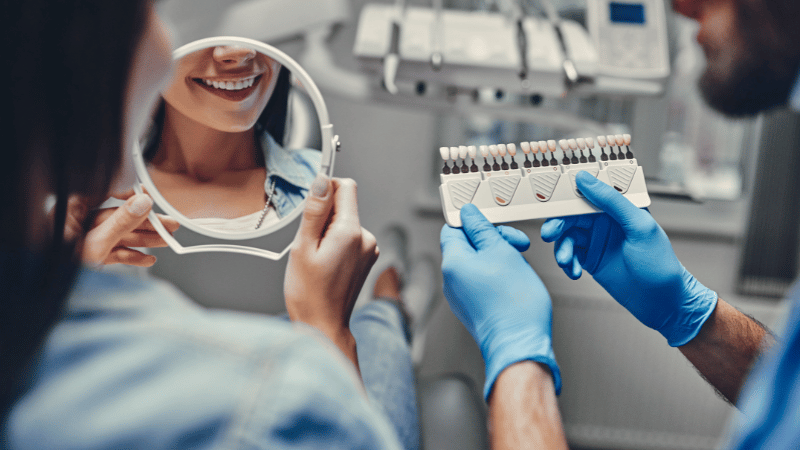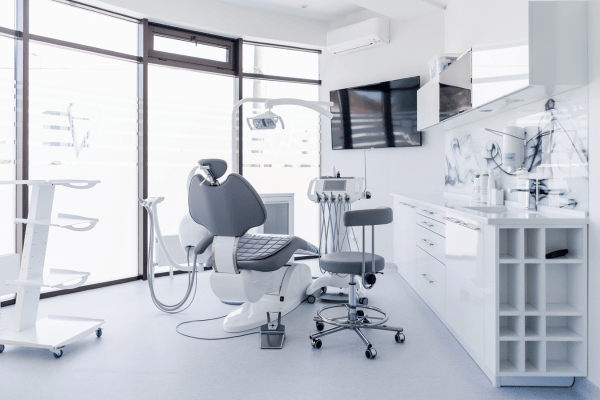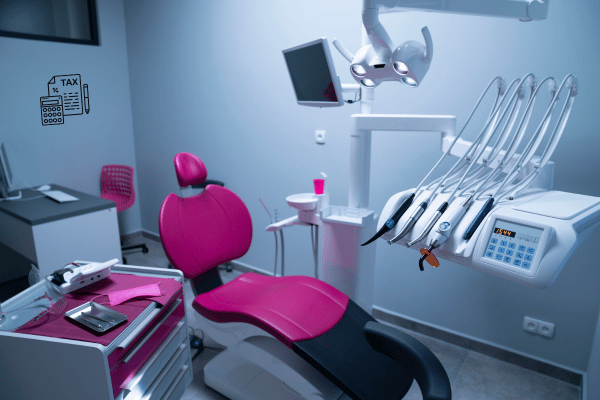Dental R&D Tax Credit: What Dentists Need to Know

The Research and Development tax credit is important to an ever-evolving field such as the dental industry. Dating back to the 1980s, its purpose is to encourage domestic businesses to invest in innovation, allowing dental practice owners to engage in technological and scientific advancement for financial benefits. Research and development applies broadly across various industries, but it can be difficult to apply it correctly to your dental practice.
The Tax Cuts and Jobs Act of 2017 introduces some changes to the well-known research and development tax credit. While many dental practices are still able to claim the credit, they are now required to capitalize on certain costs with research and development over 5 years. Even with this change, credit is a significant financial incentive for dental practices that assist in creating research activity.
What are Dental R&D Tax Credits?

The Dental Research and Development tax credit rewards dental practices for engaging in research within their practice. This is to incentivize new technologies and innovation in dentistry. These tax deductions are based on IRS qualifications that have to be met before they are claimed, such as the development of new technologies or dental equipment that can revolutionize care.
Through implementing this credit, the dental practice qualifies for a reduction in its overall federal income tax liability. Making sure to document your qualified research activities can allow you to increase your tax savings over time while giving your practice an excellent reputation for creating new techniques and technologies to use in the dental field.
Four-Part Test for Qualifying Activities
Qualifying for this particular tax credit requires you to meet four key requirements set by the Internal Revenue Service. The IRS defines qualified research as activities that fulfill four key requirements:
Technological In Nature
The activity that the dental office claims must be rooted in the principles of engineering or the natural sciences. Exploring new treatment options, new oral surgery techniques, or different software may qualify as being technological in nature. Simply experimenting with different brands or financing options for clients or employees wouldn’t qualify as technological in nature.
Permitted Purpose
The core purpose of the research must be to develop something that is new or improved for the practice. This is particularly important as being eligible for the research and development credit requires that you focus on an emerging part of the field or improve previously existing practices.
The best way to take advantage of the permitted purpose requirement is to focus on the technological aspect, including computer science and software often used in dentistry.
Eliminate Uncertainty
The research should aim to eliminate an “unknown” surrounding dentistry. This means that you should be actively testing and refining your research content to validate its effectiveness and to identify any potential shortcomings.
A great example of this pillar in action is the testing of new materials in dentistry, as the company’s focus is on eliminating uncertainty about its use in certain aspects.
Experimentation
As with any research, there needs to be a process of experimentation. This should include your basic trial run, data collection, and analysis, with ongoing updates based on the findings of the practice. Because the goal of the research is to innovate dentistry as a practice, updating your analysis and data is a key part of being eligible for this credit.
Qualified research Expenses (QREs) for Dental Practices

Along with meeting the four-part test that is set by the IRS, there are only three categories of expenses that qualify under the credit:
Wages
Wages are compensation paid to employees directly involved in qualified research and development activities. This could include dentists, hygienists, technicians, or research assistants who are directly contributing to the project. Wages that are paid for routine patient care wouldn’t count as eligibility under this credit.
Supplies
Consumable materials that are used during your research process qualify for exemptions. This could encompass different items depending on the nature of your research. A practice researching the effectiveness of new dental material might include lab materials, and 3D printing innovations for dentistry may cover the cost of print materials.
Contracted Research
If a dental practice lacks the internal resources to conduct specific aspects of research and development, they may still be able to apply and receive the credit.
This credit acknowledges this by allowing practices to include fees that are paid to external research firms or contracted research consultants engaged to perform tests with the project. This flexibility allows practices to leverage external expertise while still benefitting from the credit.
Qualifying Dental Activities for R&D Tax Credits
As long as there is a structured process of experimentation and ongoing modifications, these are some of the qualifying dental activities for research and development credits:
- Research on the effectiveness of new dental materials or equipment
- Experimenting with emerging software for managing patient records, streamlining administrative tasks, and increasing the accuracy of dental diagnostics.
- Developing and testing new sterilization processes to increase hygiene and safety during oral surgery.
Non-Qualifying Activities and Expenditures
Here are some of the activities and expenses that you can’t claim with the IRS under R&D Tax Credits:
- Routine dental supplies would not be qualified as a research expense. These include items such as gloves, masks, gauze, or cotton swabs that ultimately should be used on a regular basis within the dental practice.
- The cost of acquiring equipment or software outside of what is used for research and development wouldn’t qualify as a research expense, but software that is specifically used for research may be counted as such.
- Routine overhead costs such as rent, utilities, and salaries for administrative officials wouldn’t be considered a research expense. They are actually labeled as general business expenses rather than being tied to a specific research project.
Calculating the Dental R&D Tax Credit
To see how much of a financial boost a practice can get from their research and development credit, here are some of the ways that you can calculate them:
Primary Calculation Method
The main method of calculation that is used by the Internal Revenue Service is to calculate 20% of research expenses over a base amount. This base amount is based on a fixed rate multiplied by the average annual receipts from the past 4 years.
Alternative Simplified Method
The simpler method is to calculate the credit based on 14% of your qualified research exemptions that exceed 50% of the average QRE’s for the preceding three years. If there is no history of QREs for that year, then the rate will be 6%.
5 Benefits of Claiming Dental R&D Tax Credits

This tax credit program is a powerful incentive for dental practices to embrace studying new technologies and innovation, so here are the 5 key benefits of applying:
- Financial Savings and Increased Cash Flow: One of the most known benefits of this tax credit program is the reduction in your tax liability. The credit creates substantial tax savings by applying a certain percentage of qualified research expenditures to boost your practice’s cash flow.
- Encouragement of Innovation and Improved Patient Care: Along with saving your practice money, the culture of innovation within your practice can be extremely beneficial to your overall reputation. By rewarding research and development, this credit allows you to explore new technologies and strategies with less of an overall financial loss. This pursuit of improvement can lead to better patient care, more patient satisfaction, and notoriety within the dental community.
- Funding for Additional Research and Experimentation: The financial benefits of research and development don’t stop at tax benefits but can also pay back by allowing you to build off of initial research and development success. Many will actually take the cash flow and apply it to research and development to generate larger savings over time.
- Increased Competitiveness in the Dental Industry: By embracing research, your practice gains a significant financial edge in the already competitive dental industry. Patients are looking for practices that use the latest technologies and treatments to make the experience more comfortable for themselves. Claiming this credit demonstrates your commitment to innovation, making it a more attractive choice for these patients.
- Potential for Retroactive Claims and Ongoing Benefits: There is also a potential for retroactive claims if you have been engaging in research and development before the current tax year. The program offers ongoing benefits as your research goes on, making this a very important benefit.
How to Claim Dental R&D Tax Credits?
Maximizing your tax savings starts with meticulous record-keeping. Under Section 41 of the Internal Revenue Code, you’ll need documented proof of all qualified research expenditures, or QREs. This includes research employee wages, costs of materials specific to your research, and even fees for any contracted research services.
Once you’ve gathered your records, Form 6765 will need to be filled out. This IRS form is the official channel for claiming dental R&D credit. This will detail your research project, outline your QREs, and calculate your credit amount based on your specific circumstances.
Next Steps
The dental R&D credit offers a double win for innovative dental practices. It reduces your tax burden by providing a credit for qualified expenses like staff time and materials used in developing new techniques or treatments. This financial boost can then be reinvested back into your practice, funding further innovation and improving patient care over time.
At TaxCredits.com, we have the taxation experts that you need to fully see the benefits of dental R&D credits, taking your practice to the next level. Contact us today for a qualified CPA to help you claim your first credit!
FAQs
What industries qualify for the R&D tax credit?
There are a lot of industries outside of healthcare that can qualify for research and development credit, ranging from construction and engineering to agriculture, waste management, and HVAC. Even food industries such as wineries and breweries can qualify if they meet their respective requirements.
What tax credits are available for dentists?
While there are a lot of separate deductions for dentist offices, tax credits can be a little bit harder to find. For example, alongside the research and development tax credit, retirement plan startup cost credits can assist new businesses, such as dental practices, in offsetting retirement plan establishment costs.
What is the 25% limitation for R&D credit?
The 25% limitation applies to the research and development tax credit for C-corporations with a regular liability that exceeds $25,000. To put it simply, a C-corporation with a large bill would only be able to reduce it by 75%, owing the other 25%.
Can a dental practice claim the R&D tax credit retroactively?
Yes! You can claim the R&D credit retroactively for up to three years as long as you have documented and engaged in qualified research activities and expenses.